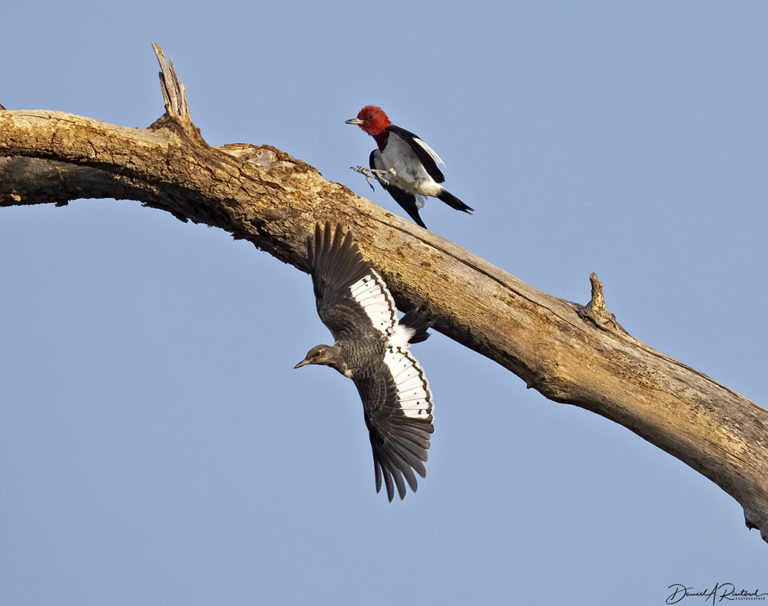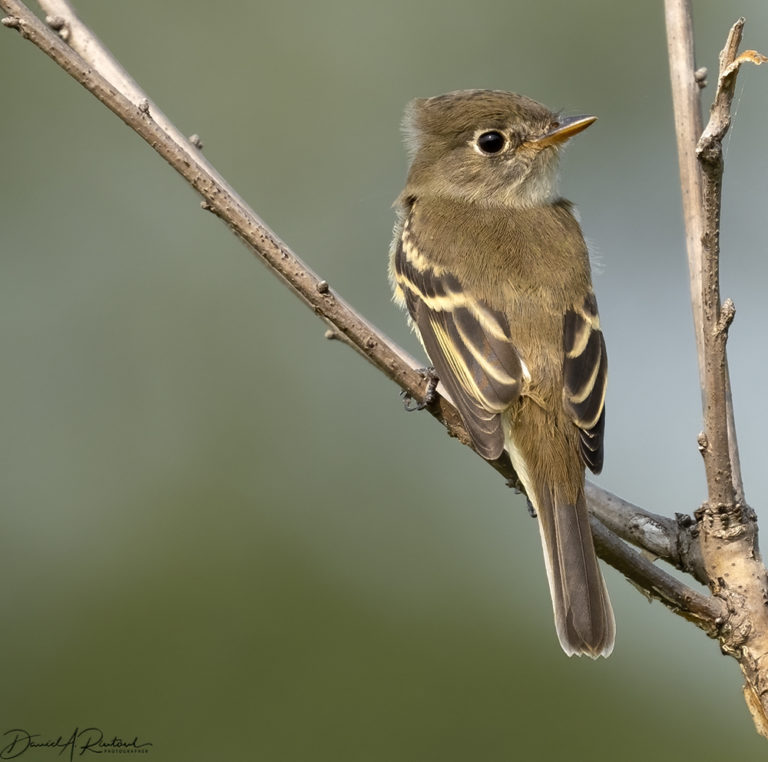On the Road is a weekday feature spotlighting reader photo submissions.
From the exotic to the familiar, whether you’re traveling or in your own backyard, we would love to see the world through your eyes.
It must officially be fall if we are heading into Fall in Flyover Country with Albatrossity! For the rest of the week we have Le Comte de Monte Cristo, BillinGlendaleCA, and the final two frosty posts from his months-long travels to parks all over the country. Thanks, frosty, for all the trips to the parks!
Albatrossity
September brings a plethora of birds to Flyover Country, with summer residents heading out, winter residents settling in, and arctic passage migrants working their way to warmer and more hospitable climes. Here’s a selection of some of those.

One of the more spectacular birds in North America is the Red-headed Woodpecker (Melanerpes erythrocephalus). With its crimson, white, and glossy black coloration, it is nearly the Platonic ideal woodpecker, and readily identifiable whenever or wherever it is seen. But the young birds can be a puzzle for birdwatchers, since they have a gray, rather than red, head. Here is a comparison shot, with an adult bird chasing a youngster away from its preferred perch on a dead cottonwood branch.

Hummingbird migration through Flyover Country peaks in September, and most of our migrants are young birds, which are not as flashy as the adults. But some of them are adult males, like this Ruby-throated Hummingbird (Archilochus colubris) ,who dominated our feeder for a couple of days.

Swallow-tailed Kites (Elanoides forficatus) are not found in Kansas, if you follow the maps in the field guides, but in recent years we have had numerous sightings in the August/September time frame. This bird was one of a pair that hung around for a few days in a rural area near my home, snagging cicadas and dragonflies over the grasslands there.

September is also the time when the first Merlins (Falco columbarius) appear in Flyover Country. These northern falcons are often just passing through, but many will stay for the winter, harassing the blackbird and Horned Lark flocks that winter on the native prairies and agricultural fields of the region.

I’ve shared photos of our most common migrant Empidonax flyctacher here already, but this adult Least Flycatcher (Empidonax minimus) perched and posed so sweetly for me that I thought you all needed to see it as well. I wish we had them here all summer; their visits in spring and fall are too short!

Wilson’s Warblers (Cardellina pusilla) are more common in the western part of North America than they are in the east, but birders across most of the continent have a chance to see them in the fall. This one was unusual in that she had a single white tail feather, which attracted my attention as she hid in the underbrush and flicked and flipped her tail repeatedly. This odd feather coloration can result from an injury or infection in the feather follicle as the new feather is growing out, and often the feather will be normally colored after the next molt.

Mixed flocks of swallows patrol the Quivira marshes in the fall, feasting on the abundant mosquitoes and midges. So I made a composite image of some swallows in flight, with a Barn Swallow (Hirundo rustica) at left and Tree Swallow (Tachycineta bicolor) at right.

Northern Harriers (Circus hudsonius) return to my patch of Flyover Country in September, and young birds like this one (distinguished by the bright rufous underside) practice feeding on their own during the fat months of September and October, hoping to make it through to the other side of the leaner months of January and February.

Ducks often are in what is called “eclipse plumage” at this time of year, exhibiting patterns and colors that sometimes don’t find their way into the field guide illustrations. This Northern Shoveler (Spatula clypeata) male does not have the white breast or shiny green head that he will sport later in the winter, but thankfully he still has that big schnozz that says he is truly a shoveler.

Another eclipse-plumaged duck, this male Blue-winged Teal (Spatula discors) lacks the blazing white crescent at the base of the bill, which is replaced with a duller and less sharply-delineated white patch. But he still has his eponymous blue wing patches!

WaterGirl
Better late than never?
Benw
@WaterGirl: better birbs than no birbs!
Geminid
@WaterGirl: Yes. A reminder to us that patience is a virtue.
I’ve already forwarded this Flyover post to my friends Debbie and Joan. It will go out to more folks soon.
OzarkHillbilly
@WaterGirl: And here I was gonna give you a hard time.
OzarkHillbilly
I gotta say that composite image of swallows in flight is so well done it looks like something out of a John J Audubon book. Every time I look at it I have to remind myself it’s photos and not a JJA illustration.
SiubhanDuinne
@OzarkHillbilly:
Yes! That was/is precisely my reaction to that photo!
Love the Merlin on a post. And the Least Flycatcher is adorable.
Ken
I choose to interpret this as an analogy for the retirees clustering around the Golden Corral buffet so they can grab all the popcorn shrimp.
LivinginExile
Red headed woodpeckers were thick around here 50 years ago, in West central Illinois. Very seldom see them now. Always enjoy your photos.
Princess Leia
I can’t really express how grateful I am for your photos and explanations. I learn so much! And I am more attentive to the (few) birds in my very urban area. So much beauty – and how much we need it now!!!
Rob
Loving the kite, merlin, and woodpecker photos the most. Thanks, Albatrossity! (and WaterGirl)
Betty
Each picture with explanation is special, but my favorite this morning is the woodpecker one.
Chat Noir
Love these birb pix and the accompanying information! Thanks!
Debbie
@Geminid: ✅
WaterGirl
@OzarkHillbilly:
Go ahead. I think that’s in my job description, right there with other duties as assigned. :-)
Ken
@WaterGirl: You’re the one who gets to talk to John when the video ads are screwing up the site, so I think we should all cut you an infinite amount of slack.
pika
I love these always so much. When I lived in Wichita, the Mississippi Kites were such a joy to watch wheeling in the air. I was always hoping to see a Swallow-tailed Kite, but no dice, so thank you for the photo!
Albatrossity
@Ken: Amen. Watergirl gets nothing but kudos from me!
trollhattan
I know two or three folks able to photograph swallows in flight and these have me doffing my cap–surely one of the toughest tasks a photog can tackle.
Great images, the lot of them.
I can do hooman sports but birbs, sheesh they’re hard.
stinger
Art! Education! Humor! It must be Albatrossity Monday!
Love that Least Flycatcher with the rosy little bill, and the nice clean trim on wings and tail.
randy khan
That merlin photo is awesome.
My wife and I recently had the chance to go on a walk in a nature preserve in Cape May, New Jersey, with a friend who is a very serious birder, and while I’ve always been impressed with his expertise, seeing him in action gave me a much better idea of why he loves it so much. There’s so much to see if you know where to look.
BigJimSlade
@Albatrossity: Hi Albatrossity – whenever I try to take pictures of birds, I appreciate yours a bit more!
On Saturday we were hiking in Malibu in the Santa Monica Mountains… usually the birds of prey soar on the air currents coming off the mountain ridges, but around Zuma Canyon, they circle more around the bottom of the canyon where the horse stables are. I figure there are more rodents down there.
Near the end of the hike, we came across this guy/gal who was comfortable as we walked by maybe 20 or 30 yards away. Later a woman went by on a horse and it stayed put. Can you tell if this is a hawk, or something else?
Pic 1
Pic 2
stinger
never mind
Albatrossity
@BigJimSlade: That’s a Northern Harrier, just like the one in this photo set. Nice shots!
trollhattan
Speaking of flying things, some rare good news.
J R in WV
As usual, I can’t tell whether the photos or the texts are more fun. Great photography, plus the wisdom of the long-time birb-watcher and bio professor.
Thanks again ~!!~
BigJimSlade
@Albatrossity: (re: Northern Harrier) That’s one I don’t really know anything about – thanks! I just googled it and one of the first pictures that comes up looks just like one I took!
HinTN
I’m very late to the party here, @OzarkHillbilly:, but that was my immediate reaction as well. Beautifully done, @Albatrossity:, and thanks as always for the very personal field guide to your part of flyover country.
HinTN
@trollhattan: Driving across the Apalachicola Bay to St George this morning there were thousands fluttering all about. None out at the beach but encouraging in the numbers observed.
Wag
Hummingbird migration is an interesting time. In September I have twice run into hummers at 14,000 feet altitude on high Colorado peaks. very impressed by them
Albatrossity
@HinTN: Yes, I am currently on the NC coast (Emerald Isle) and we have seen many monarchs working their way down the beach, nectaring on the abundance of goldenrod flowers. It’s good to see them in decent numbers!
Mike S (Now with a Democratic Congressperson!)
I always love your photos, but my fav in this set is the swallow-tailed kite!
Thanks for the sharing,
mvr
Got here late. But thanks for the photos which are always wonderful.